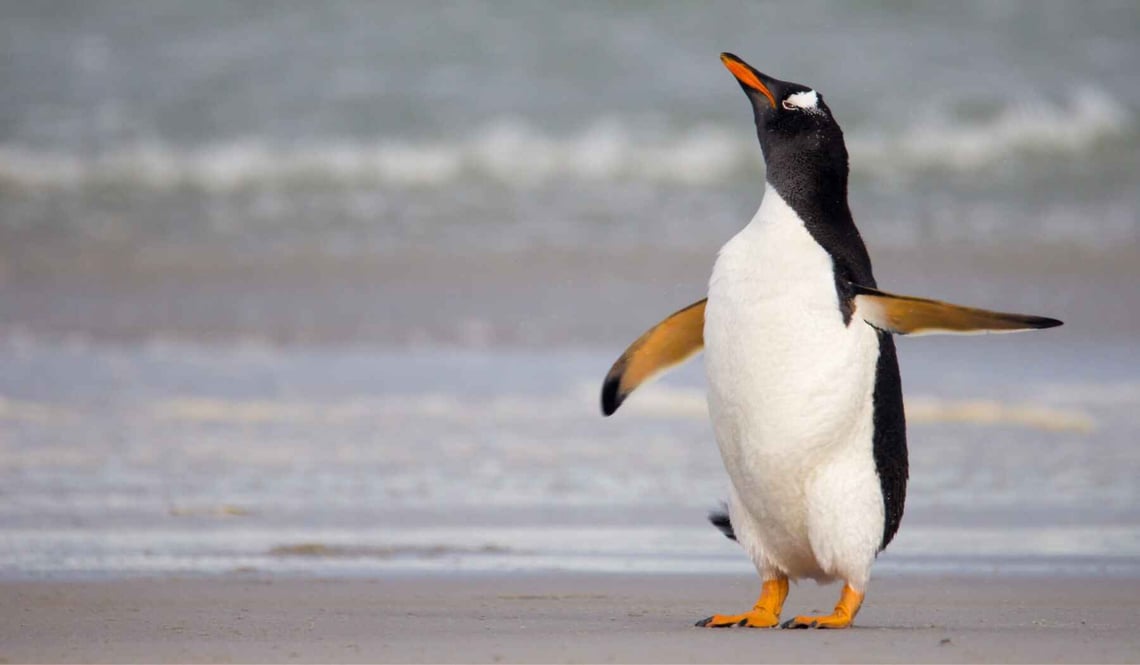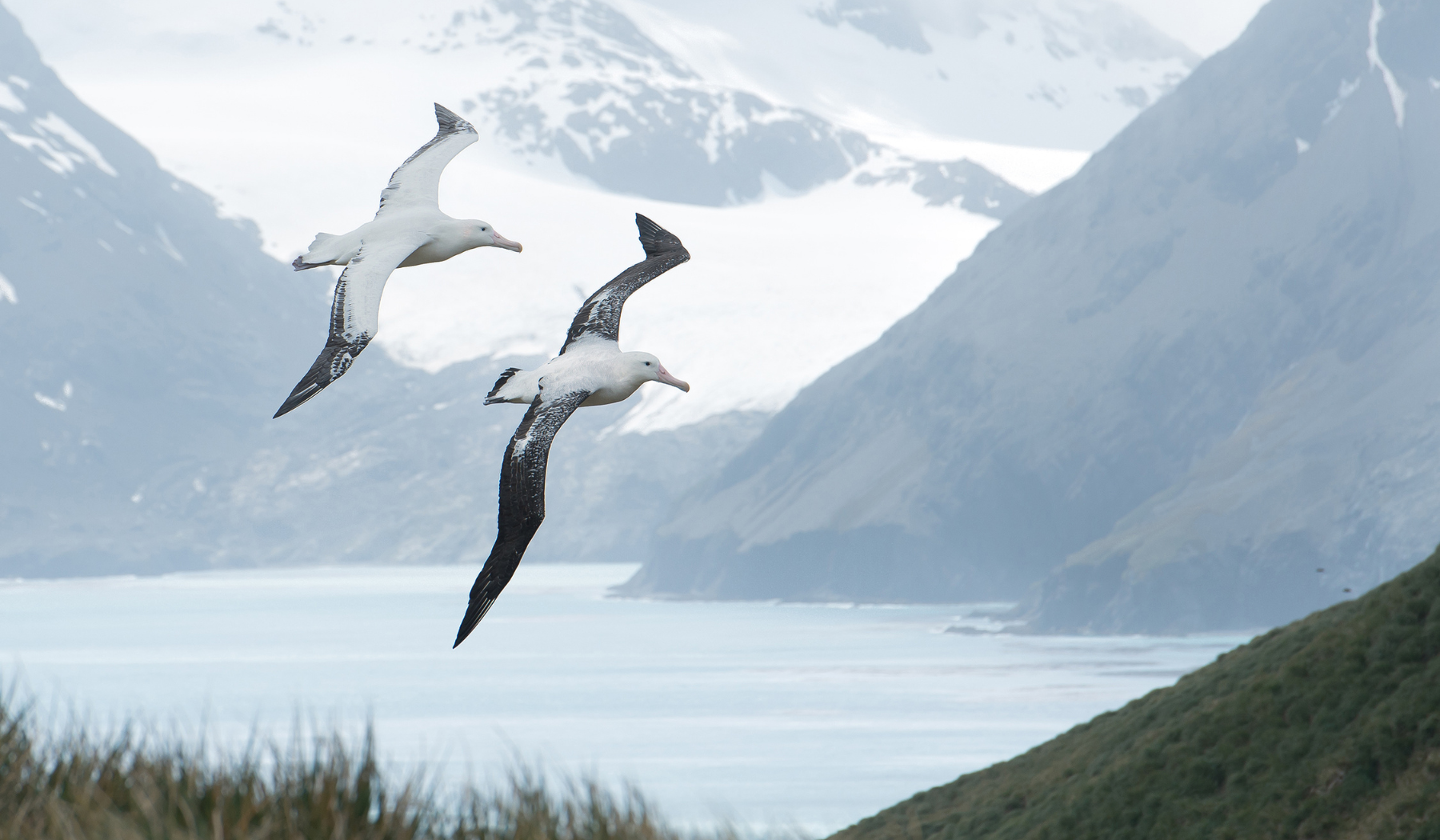Antarctica is synonymous with jaw-dropping, shifting icy landscapes, creatures both great and small, adventure sports, and research. Read on to discover the top 10 must-do activities for travelers taking the trip of a lifetime to the seventh continent.
1. Discover the seventh continent
Antarctica is so unimaginably remote that it lay undiscovered for most of human history. It is the only continent to have been truly “discovered” in the sense that there were no Indigenous peoples living there beforehand. In 1733, Captain James Cook was the first navigator to cross over into the Antarctic Circle, however he did not sight land. The seventh continent was not discovered until 1820, when a British naval officer on a mapping expedition spotted high mountains covered with snow. You, too, can feel the thrill of discovery on the adventure of a lifetime as the ship breaks through pack ice, and those white peaks come into view, when you start exploring one of the remotest, wildest, and most extreme places on Earth.
To get even closer to the authentic experience, follow in the footsteps of a truly heroic historic figure from the golden age of Polar exploration, Ernest Shackleton.
2. Fly there in style
While journeying to the seventh continent is an adventure in itself (and incidentally a chance for some epic whale spotting), not everyone has great sea legs. The ultimate trip is to bypass some of the most arduous sailing, and fly straight to your ship awaiting you in the white continent. There is no better way to explore Antarctica than by fly and sail.
3. Whale spotting
-png.png?width=1140&height=884&name=antarctica%20(3)-png.png)
Go on an Antarctic Whale journey. Board a Zodiac to explore iceberg-filled bays and get closer to some truly magnificent migrating mammals. Keep your eyes peeled for a shadowy presence or movement underwater, and that unmistakable, breathtaking breach as the whale lurches upwards, eyeing the boat before arcing backwards into the water with an almighty splash. There are up to eight species of whale to be seen throughout the Antarctic in the summer. You are likely to come across the giant tails of the placid humpback, the darting of the nimble orca, and the awe-inspiring blue whale, plus southern right, minke, and finback (rorqual) whales. The best time to spot them is at the end of the season in February and March, when they gather in large pods of hundreds of whales before migrating north.
4. Don’t just spot whales
Get involved in Antarctic science and research on board your expedition cruise. You could help collect data on whale sightings. Happywhale is a citizen science project on many expedition ships. The project was launched by marine biologists in 2015, and has grown into a global network of whale enthusiasts and researchers. Take photos of whales you encounter during your trip and upload them to the Happywhale website or mobile app. The project's software uses machine learning algorithms to identify individual whales based on their unique markings and patterns. The data collected is shared with researchers and conservation organizations, who use it to better understand whale populations, migration patterns, and behaviors.
5. Spot seals
.jpg?width=1800&height=1050&name=Seal%20(2).jpg)
Step onto the continental ice to spot seals hauling themselves out of the water or lying along the shores. There are six species of seal, including Weddell and Antarctic fur seals, the rarest being the Ross seal, which is only found on pack ice in Antarctica. These native seals have adorably huge eyes, and the fuzzy babies would melt the hardest of hearts. As the biggest seals on the planet, southern elephant seals are another major highlight. The most predatory species is the leopard seal, which loiters on the edges of the pack ice to devour its favorite meal, the small and very widespread Adélie penguin. The most abundant seal species in the world is the pretty, plump, pale-colored crabeater seal, which has become so successful due to its specialized diet, using its curiously serrated teeth to strain krill out of the seawater.
6. Spot penguins galore

Who wouldn’t want to walk among penguin rookeries to see those happy feet in their natural habitat? With 20 million breeding pairs of penguins in Antarctica, you are sure to see plenty of them. Of a total of 19 possible penguin species, seven call Antarctica and the surrounding subantarctic islands home: the Adélie, chinstrap, gentoo, macaroni, king, and rockhopper penguins. Get up close and personal by Zodiac, hike to see their breeding grounds from a respectful distance, or even take a helicopter ride to visit king penguins on their islands. The gregarious and sociable gentoo penguins are favorites among travelers. They tend to stay closer to shore and are easy to spot, as they have a bonnet-like white stripe on their heads, a bright red-orange bill and a very long, swishy tail.
Bear in mind that the Antarctica visitor regulations require you to maintain a distance of at least 16 feet from penguins, so you do not disturb them or distract the parent birds—as predators such as skuas or giant petrels are always looking for an opportunity to feed their own young. It is alright if a bird makes the first move towards you, however you are not allowed to touch or hold it. The chicks are highly curious and are likely to come and investigate humans to find out what they are, and may even walk over your boot or try to climb into your lap.
7. Spot birds

There are 46 species of birds in Antarctica, several unique to the region. Apart from penguins, the fascinating pink-faced snowy sheathbill is the only land bird native to Antarctica and tends to stay on the ground. Birders can tick those elusive Antarctic bird species off their list, such as the Antarctic shag, Antarctic tern, brown or Antarctic skua, Antarctic prion, and the wandering albatross. The Arctic tern also migrates over 12,000 miles for Antarctic summer, thus experiencing more daylight than any other animal on Earth. The best way to get to know the birds in the Antarctic is by actively exploring the white continent on foot to get up close to them.
8. Go sea kayaking
Many expedition cruises offer unforgettable adventure activities, such as sea kayaking, surely the most exhilarating way to experience the Antarctic. Paddling with an experienced guide offers a unique opportunity to explore the breathtaking beauty and get on eye level with the wildlife. Enjoy special moments with penguins, paddle through bird colonies, encounter seals and whales, and perhaps even leopard seals or killer whales.
9. Polar plunge
.jpg?width=1920&height=1280&name=AXXI_PC1-1415_Nicolas%20Gildemeister__NGB1038%20(1).jpg)
You don’t have to be an expert to enjoy a little snowboarding or skiing on the white continent. But you do have to be tough to take an invigorating Antarctica polar plunge. This eminently Instagrammable activity is not for the faint-hearted and can only be done with the backup of a support team, a shot, and a dry towel on hand for afterward, followed by a dip in a hot tub or a shower. You may want to get that photo shoot right the first time round, as Antarctic waters tend to be around 35° Fahrenheit. All our Antarctica cruises offer the polar plunge at no extra cost. What are you waiting for?
The Antarctic Peninsula Basecamp expedition cruise offers you all kinds of ways to explore the seventh continent, including snowshoeing, kayaking, mountaineering, and even camping out under the spectacularly star-filled polar skies.
10. Il dolce far niente
After all this activity and adventure, you can afford to pedal back a little and take in the vastness of your surroundings, for example by staring into the Antarctic sunset, like this penguin. Or maybe you just want to enjoy a relaxing sauna with the best view on board of our cruises.





